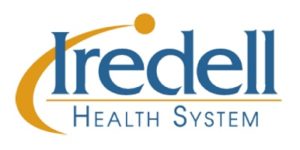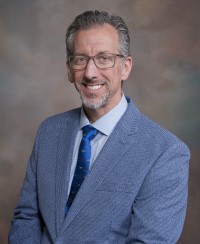
Special to Iredell Free News
You may have seen the letters “MD” following a doctor’s name, but have you seen “DO?”

If a doctor went to an allopathic medical school, they’ll have an “MD” after their name, meaning they have a doctor of medicine degree. But if they went to an osteopathic medical school, they’ll have “DO” after their name, meaning they have a doctor of osteopathic medicine degree.
Both MDs and DOs are fully trained, licensed doctors who can treat your illnesses and injuries, but there are a few subtle differences between the two in how they treat conditions.
There are two DOs within the Iredell Physician Network — Dr. Anthony Elkins of Iredell Primary Care and Dr. Charles DeBerardinis of Statesville Cardiovascular Clinic.
April 17-23 is National Osteopathic Medicine Week, a national observance dedicated to spotlighting the osteopathic medical profession and raising awareness about the unique approach DOs bring to healthcare.
In celebration of National Osteopathic Medicine Week, Dr. Elkins answered a few questions about osteopathic medicine and why he chose to become a DO.
Q: How are DOs and MDs alike?
ELKINS: DOs and MDs are the only two types of fully licensed physicians in the United States. Both attend four years of medical school and then continue training in residency where the physician focuses on their specialty. Both DOs and MDs take comparable licensing exams and, in most states, are licensed and regulated by the same medical board. DOs and MDs can both see patients, prescribe medications, perform surgeries, and care for illnesses and injuries.
Q: What is a Doctor of Osteopathic Medicine (DO)?
ELKINS: DOs have a slightly different philosophy of patient care than our MD colleagues. DOs are specially trained to look at the person as a whole, with all body systems being interrelated and disease in one affecting the others. We tend to focus our attention on the patient rather than the disease. A patient’s background, job, habits, family, culture, and overall lifestyle impacts their health and may require a personalized approach to best treat them. DOs believe the body has the inherent capability to heal itself. We emphasize health, wellness, and prevention.
The main distinction of osteopathic medicine is the focus on the musculoskeletal system. The root “osteo” refers to bone. DOs receive extra training in the musculoskeletal system and learn a technique called osteopathic manipulative treatment (OMT). OMT is a hands-on technique that involves moving and manipulating muscles, bones, joints, connective tissue, nerves, and blood vessels to treat the disease and promote health. Because all body systems are inter-related, treating the musculoskeletal system can correct not only musculoskeletal ailments but other disease processes as well.
Q: Can you provide an example of how MDs and DOs may use different treatments?
ELKINS: Let’s use asthma as an example of how MDs and DOs may treat their patients differently. A patient having an asthma attack would traditionally be treated with medications such as steroids, inhalers, and bronchodilators. In addition to treating the patient with medications, a DO may utilize OMT. During an asthma attack, the lungs aren’t working optimally. So, a DO might perform manipulative techniques on the ribs, diaphragm, thoracic spine, and lymphatic system to promote the return of normal breathing mechanics.
Q: How do you use osteopathic medicine at Iredell Primary Care?
ELKINS: At my family practice, Iredell Primary Care, about half of my patients are seen for routine conditions such as physicals, diabetes, cardiovascular disease, and illnesses such as respiratory infections. But, because I specialize in musculoskeletal medicine, the other half of my patients have sports-related complications such as knee injuries, concussions, or arthritis. I utilize traditional treatments in addition to OMT to provide an extra level of care for my musculoskeletal patients. OMT is often used to treat back or neck pain, carpal tunnel syndrome, ankle sprains, as well as non-musculoskeletal conditions such as headaches, asthma, COPD, and even COVID-19.
Q: Why did you decide to become a DO?
ELKINS: I was inspired to become a DO by my own family doctor, himself a DO. I was his patient for 25 years. For most of those years, I did not know the distinction between an MD and DO — I just knew that he was a good doctor who cared for my entire family and me. When I was old enough to know the difference, I knew this was the type of doctor I wanted to become.
Dr. Elkins is board certified in family medicine and osteopathic manipulative treatment. He is a past president of both the North Carolina Osteopathic Medical Association and the North Carolina Society of the American College of Osteopathic Family Physicians. Elkins is also an assistant professor of family medicine at Campbell University School of Osteopathic Medicine and the Edward Via College of Osteopathic Medicine at the Virginia and Carolina campuses. He practices at Iredell Primary Care, located at 114 Gateway Boulevard, Suite B, in Mooresville. If you would like to schedule an appointment with Dr. Anthony Elkins, call the practice at 980-435-0406.
About Iredell Health System
Iredell Health System includes Iredell Memorial Hospital; Iredell Mooresville; Iredell Home Health; Iredell Wound Care & Hyperbaric Center; Community and Corporate Wellness; Occupational Medicine; the Iredell Physician Network and more. Iredell Memorial Hospital is the largest and only nonprofit hospital in Iredell County. The comprehensive healthcare facility has 247 beds; more than 1,800 employees; and has 260 physicians representing various specialties. Centers of excellence include Women’s and Children’s; Cardiovascular; Cancer; Surgical Services and Wellness & Prevention. The Health System’s newest campus, Iredell Mooresville, is home to the area’s only 24-hour urgent care facility, as well as an ambulatory surgery center, imaging center, rehabilitation services, and physician practices. The mission of Iredell Health System is to inspire wellbeing. For a comprehensive list of services and programs, visit www.iredellhealth.org



